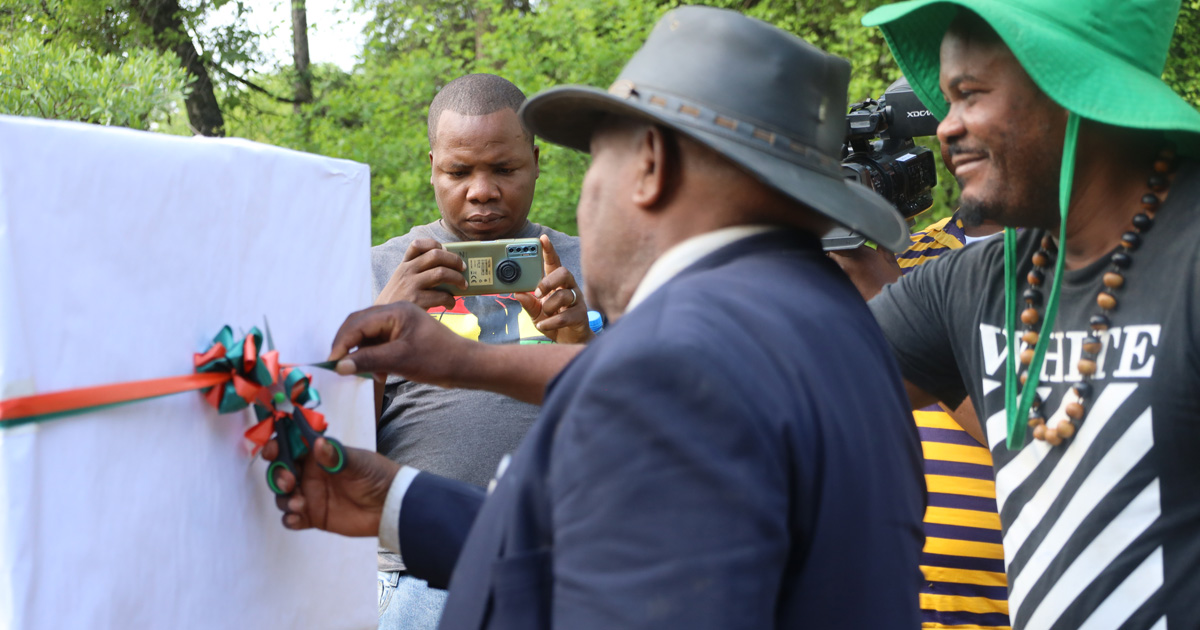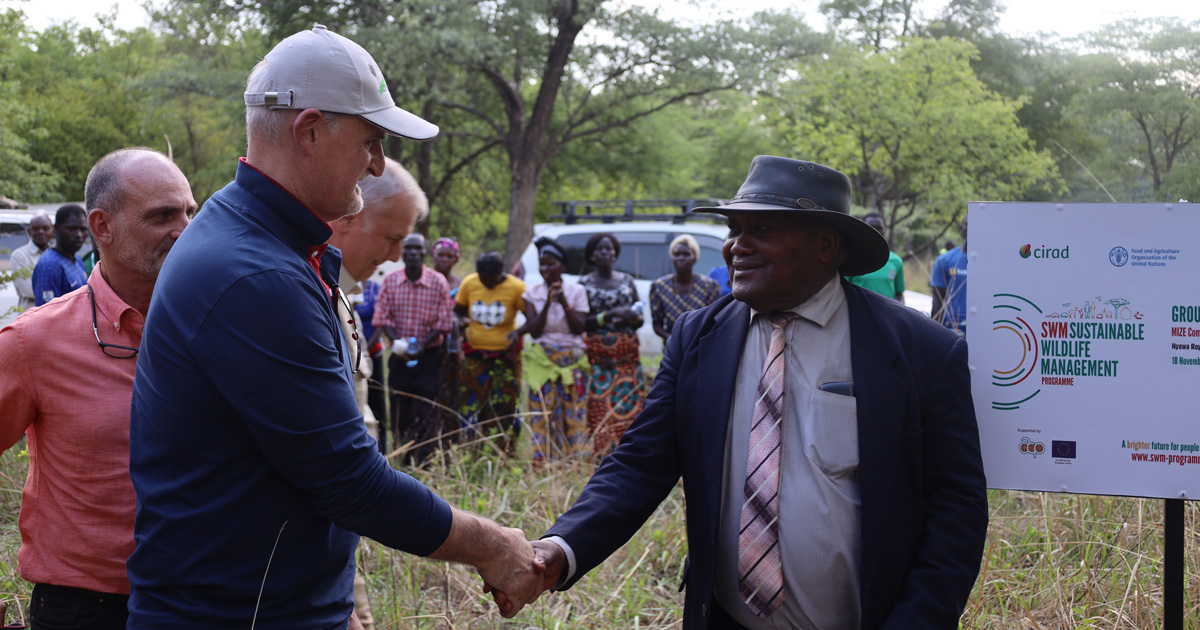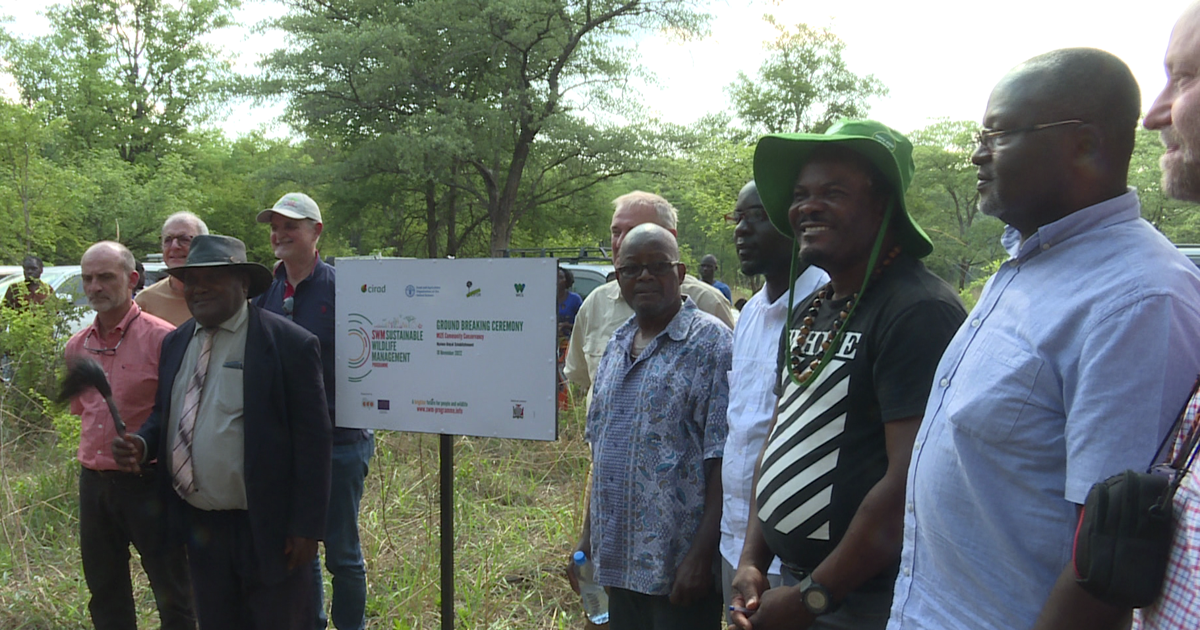
By Martha Katsi
The 18th of November 2022 is no longer an ordinary date for Zambia’s Nyawa community. It now marks the official launch of the MIZE Community Conservancy (MiCC), the country’s newest wildlife sanctuary, which is situated in Nyawa Chiefdom in the Kazungula District of Zambia’s Southern Province.
Presiding over the official launch of the conservancy, His Royal Highness Chief Nyawa was joined by community members, the Kazungula District Commissioner Elias Siamibila, and project partners – including a team from the Sustainable Wildlife Management (SWM) Programme, an EU-Funded initiative to reduce the pressure of wildlife hunting by promoting, under the auspices of climate change, sustainable use of wildlife and alternative sources of protein from livestock, forest foods, and fish.

“Today’s celebration embodies teamwork in its purest form,” said Nyawa. “Without the leadership and assistance of our donors and so many people present, we would not be here today to commemorate this significant project. As a community, we saw that farming was becoming less viable due to climate risks and change. Therefore, we made a decision to pursue natural resource conservation. This conservancy will contribute to improving community livelihood, wildlife management, and land use planning.”
MiCC is the result of collaboration between the SWM Programme, the national government, local authorities and local communities. The French Agricultural Research Centre for International Development (CIRAD) and the Center for International Forestry Research (CIFOR) work together to oversee the project. “His Royal Highness [Nyawa] conceived and carried out the vision for this project,” said Davison Gumbo, SWM Programme Operations Manager for Zambia; “the SWM Programme and partners found a way to make that vision a reality.”
Robert Nasi, the Director General of CIFOR, commended Nyawa and his community for investing in natural resources management. “[They] are using their own natural resources and green infrastructure – the forest, the wood, and the trees – to invest in natural solutions to withstand the effects of climate change,” he said.

UN Food and Agriculture Organization (FAO) Regional Coordinator Jean-Claude Urvoy said that “the most crucial aspect [of the project] is that the Nyawa community eventually benefits with better livelihoods, incomes, jobs, and all other forms of rural development.” This work aligns with the Zambian government’s objective to encourage local social and economic development, said Siamibila, who urged the community to cooperate to secure the project’s success. “May everyone take on the role of this project’s guardian and defender, as it is our project,” he said. “I have heard from two community conservancies in the Kazungula district so far… I can tell you that because MiCC is entirely owned by the community, Nyawa’s economy will be transformed.”
Following the launch, a board with local representation is being chosen to run the conservancy, and a management strategy is being developed to ensure viability and strengthen governance. MiCC will operate as a company limited by guarantee in accordance with Zambian law and will collaborate with possible investors from the private sector to launch nature-based businesses designed to bring in money for the community to ensure its economic survival. The SWM Programme will continue to support fundamental infrastructure development, private sector partnerships, governance, and resource management.

The event ended with a tree-planting ceremony. Patrice Grimaud, a site coordinator at the SWM Programme, acknowledged that “the work has not always been easy, and the result is well deserved. Today is the official day of the creation of MIZE Community Conservancy and – in the same way that these trees have just been planted – it is a seed that will have to be cared for and nurtured.”
The Sustainable Wildlife Management (SWM) Programme is a major international initiative that aims to improve wildlife conservation and food security. It is developing innovative, collaborative, and scalable new approaches to conserve wild animals and protect ecosystems, whilst at the same time improving the livelihoods of Indigenous peoples and rural communities who depend on these resources.
The SWM Programme is an initiative of the Organisation of African, Caribbean and Pacific States (OACPS), funded by the European Union with co-funding from the French Facility for Global Environment (FFEM) and the French Development Agency (AFD). The programme activities are being implemented in fifteen countries by a consortium of partners, which includes the Food, and Agriculture Organization of the United Nations (FAO), the French Agricultural Research Centre for International Development (CIRAD), the Center for International Forestry Research (CIFOR), and the Wildlife Conservation Society (WCS).













